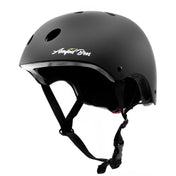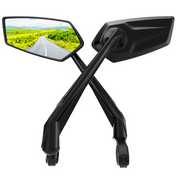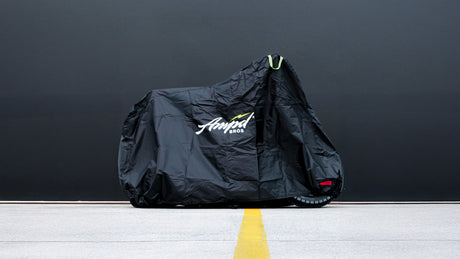Keep your Surron Light Bee performing at it's peak with regular servicing and maintenance. See below for our ultimate guide including the maintenance schedule, error codes and troubleshooting tips for your Surron Light Bee Electric Dirt Bike.
SURRON LIGHT BEE MAINTENANCE SCHEDULE
| ITEM | EVERY RIDE | EVERY 100KM | EVERY 500KM | EVERY 2,000KM | EVERY 5,000KM | EVERY 10,000KM / 12 MONTHS |
|---|---|---|---|---|---|---|
| TYRE PRESSURE / WEAR | INSPECT | |||||
| BRAKE PADS | INSPECT | INSPECT | INSPECT | INSPECT / REPLACE | INSPECT / REPLACE | |
| CHAIN | INSPECT | INSPECT / LUBRICATE | INSPECT / LUBRICATE | INSPECT / REPLACE | INSPECT / REPLACE | |
| BATTERY PACK VOLTAGE | INSPECT | |||||
| DASHBOARD WARNING CODE | INSPECT | |||||
| FORK / SHOCK OIL | INSPECT | INSPECT | INSPECT / MAINTENANCE | |||
| BRAKE FLUID | INSPECT | INSPECT | INSPECT / REPLACE | |||
| ALL BEARINGS | INSPECT | INSPECT | INSPECT | INSPECT / REPLACE | ||
| ALL LIGHTS | INSPECT | |||||
| WHEEL SPOKES | INSPECT | ADJUST | ADJUST | ADJUST |
SURRON LIGHT BEE ERROR CODES
(Light Bee X requires the included diagnostic cable to be connected to the battery and count number of flashes on the LED, L1E shows error codes on the dashboard display.)| REF | LED No OF FLASH TIMES (LIGHT BEE X) | DIAGNOSTIC EXPLANATION | CODE SHOWN ON DISPLAY (L1E) | SOLUTION |
|---|---|---|---|---|
| 1 | 1 | normal operation condition | ---- | ---- |
| 2 | 2 | controller power tube malfunction | Er-208 | turn off power switch and turn on again |
| 3 | 3 | controller hardware over current protection | Er-207 | leave throttle to idle position and twist throttle again |
| 4 | 4 | controller software over current protection | Er-206 | auto recovery |
| 5 | 5 | motor main cable phase malfunction | Er-205 | turn off power switch and turn on again |
| 6 | 6 | motor Hoare coil malfunction | Er-204 | turn off power switch and turn on again |
| 7 | 7 | motor stall protection | ---- | leave throttle to idle position and twist throttle again |
| 8 | 8 | controller level. 1 over temperature protection | Er-202 | turn off power switch and turn on again |
| 9 | 9 | controller level. 2 over temperature protection | Er-201 | turn off power switch and turn on again |
| 10 | 10 | motor level. 1 over temperature protection | Er-216 | turn off power switch and turn on again |
| 11 | 11 | motor level. 2 over temperature protection | Er-215 | turn off power switch and turn on again |
| 12 | 12 | battery level.2 over voltage protction | ---- | leave throttle to idle position and twist throttle again |
| 13 | 13 | battery level.2 low voltage protction | Er-213 | leave throttle to idle position and twist throttle again |
| 14 | 14 | throttle rush-out protection | Er-212 | turn off power switch and turn on again |
| 15 | 15 | Throttle to controller signal wire short-circuit | Er-211 | turn off power switch and turn on again |
| 16 | 16 | brake protection | ---- | auto recovery |
| 17 | 21 | controller current sampling failure | Er-209 | turn off power switch and turn on again |
| 18 | 22 | side stand protection | Er-224 | auto recovery |
| 19 | 23 | tilt swith protection | Er-223 | leave throttle to idle position and twist throttle again |
| 20 | 24 | key switch port power failure protection | Er-222 | turn off power switch and turn on again |
| 21 | 25 | battery low voltage protection (level. 1) | Er-221 | turn off power switch and turn on again |
| 22 | 27 | CAN communication malfunction | ER 217 | auto recovery |
| 23 | ---- | communication malfunction( | ER 002 | auto recovery |
| 24 | 28 | battery premier discharge(voltage) protection(level. 2) | Er-105 | charging battery to recovery |
| 25 | 29 | battery discharge low temperature protection(level. 2) | Er-114 | turn off power switch and turn on again |
| 26 | 30 | battery over temperature protection(level. 1) | Er-219 | turn off power switch and turn on again |
| 27 | 31 | controller and battery 485 communication no response | Er-216 | auto recovery |
| 28 | 32 | controller and battery 485 communication unmatch | auto recovery | |
| 29 | 33 | battery SOC low capacity protection | Er-218 | turn off power switch and turn on again |
| 30 | 17 | motor temperature sensor malfunction | Er-200 | auto recovery |
| 31 | 18 | battery BMS discharging MOS malfunction | Er-107 | recovery after fault removal |
| 32 | 18 | battery BMS charging MOS malfunction | Er-106 | recovery after fault removal |
| 33 | 19 | battery BMS MOS temperature sensor malfunction | Er-102 | auto recovery |
| 34 | 19 | battery cell temperature sensor malfunction | ---- | auto recovery |
| 35 | 20 | battery discharge over temperature protection(level. 2) | Er-116 | temperature drop to working temperature to recovery |
| 36 | 26 | battery cell charging over temperature protection(level. 2) | ---- | temperature drop to working temperature to recovery |
| 37 | 34 | battery cell charging low temperature protection(level. 2) | ---- | temperature rise to working temperature to recovery |
| 38 | 20 | battery discharging MOS over temperature protection(level. 2) | ---- | temperature drop to working temperature to recovery |
| 39 | 26 | battery charging MOS over temperature protection(level. 2) | ---- | temperature drop to working temperature to recovery |
| 40 | 20 | battery BMS soft start circuit over temperature protection(level. 2) | ---- | temperature drop to working temperature to recovery |
| 41 | 35 | battery over current protection (level.3) | ---- | auto recovery |
| 42 | ---- | battery BMS discharge MOS over temperature protection(level. 1) | Er-120 | temperature drop to working temperature to recovery |
| 43 | ---- | battery premier over discharge(voltage) protection(level. 1) | Er-119 | auto recovery |
| 44 | ---- | battery discharge low temperature protection(level. 1) | Er-118 | temperature rise to working temperature to recovery |
| 45 | ---- | battery discharge over temperature protection(level. 1) | Er-117 | temperature drop to working temperature to recovery |
SURRON LIGHT BEE TROUBLESHOOTING GUIDE
| ISSUE | POSSIBLE CAUSE | DIAGNOSIS | SOLUTION |
|---|---|---|---|
| No power after starting the bike | The battery is not installed in the vehicle body, or the plug is not inserted into the Battery properly | Check the battery plug | Insert the battery and plug in properly |
| The air switch in front of the battery is not turned on | Check the air switch | Turn on the air switch | |
| Low battery protection | Turn off the air switch and use a multimeter to check whether the output voltage of the battery discharge port is normal (DC45V-67.2V) | Charge the battery | |
| Battery enters low temperature or high temperature protection | Check if the ambient temperature is lower than –20 degrees Celsius, or check if the battery temperature is too high | Wait for the battery temperature to return to normal (-20 degrees to 70 degrees) | |
| The main cable fuse is blown | Check the fuse status | Replace the fuse | |
| Electric door lock plug contact bad | Use a multimeter to check whether the electric door lock can be effectively connected | Tighten the plug or replace the electric door lock | |
| Damaged converter | The multimeter detects whether the output voltage of the converter is normal DC12V | Replace the converter | |
| Battery output short circuit protection | When the air switch is turned on or off, use a multimeter to check whether the output voltage of the battery charging port is normal (DC45V-67.2V). | Remove the input positive and negative wires of the controller. If the whole vehicle is powered on, it means the controller is short-circuited, and the controller should be replaced. | |
| damaged battery | Turn off the air switch, use a multimeter to check whether the output voltage of the battery discharge port is normal (DC45V-67.2V), and still cannot recover after charging with a charger, it means the battery is damaged | Repair or replace the battery at the authorised after-sales point | |
| After the bike is turned on, the power supply is normal, but the motor does not work |
Side bracket switch protection |
Fold the side stand | Fold the side stand |
| Brake power switch protection | Disconnect the brake switch cable plug | After determining the position of the brake point of the handle, adjust the position of the power-off switch | |
| The dump switch is not reset after the vehicle is reversed | After lifting the vehicle, turn off the key and then turn on the key to reset | After lifting the vehicle, turn off the key and then turn on the key to reset | |
| Throttle does not return protection when power on | Check the throttle cable free travel | Adjust the cable free travel | |
| Low battery protection | Check battery level | Charge the battery | |
| Motor over temperature protection | Check whether it is a long-term heavy-duty ride | Wait for the motor to cool down before use | |
| Controller over temperature protection | Check whether it is a long-term heavy-duty ride | Wait for the controller to cool down before use | |
| Damaged side bracket switch | Disconnect side bracket switch plug | Disconnect the side stand switch plug or replace the side stand switch | |
| Broken brake switch | Disconnect the brake switch Cable plug | Disconnect the brake switch plug or replace the brake switch | |
| Damaged dump sensor | Disconnect dump sensor plug | Disconnect dump sensor plug or replace dump sensor | |
| Poor contact of the speed control center or damaged | Turn the throttle, and the multimeter will check whether the signal output voltage (black and white line and green and white line) of the speed control center changes within 0.8V - 3.4V | Replacing the speed control center | |
| Poor connection of controller plug | Re-plug the plug and check if the terminals are abnormal | Re-plug the controller signal plug | |
| Poor contact of the motor hall wire plug | Re-plug the plug and check if the terminals are abnormal | Re-plug the motor Hall plug | |
| Use a multimeter to check whether the voltage of the motor Hall line is normal: red line and black line is 4.2V, if the voltage is abnormal, it means that the controller signal voltage output is faulty. | Replace the controller | ||
| When the rear wheel is in different positions, use a multimeter to check whether the voltage of the motor hall line is normal: The voltage of the yellow line, green line, and blue line to the black line respectively: 0V or 4.2V, if the voltage is abnormal, it means that the motor hall is faulty | Replace the motor | ||
| After power on, the power supply is normal, but the battery gauge does not display | Electricity meter plug loosened | Repair or replace the battery at the designated after-sales point | |
| Damaged electricity meter | Repair or replace the battery at the designated after-sales point | ||
| Charger not charging | Battery over discharge protection | Check the remaining power of the battery, if the power meter does not display, it may be that the battery power is too low and enter the protection | See battery charging activation process |
| Battery temperature is too low or too high | The temperature is lower than 0 degrees or higher than 60 degrees and cannot be charged | Wait until the battery temperature is normal before charging | |
| Charger plug contact bad | Check the charger plug | Re-plug the charging plug | |
| Damaged charger | After all the above may be excluded and still cannot be charged, it is judged that the charger is faulty | Replace the charger | |
| damaged battery | If the charger still cannot be charged after replacing the charger, it is judged that the battery is faulty | Replacement battery | |
| The power mode is invalid, or the power is reduced | low battery | Check battery level | Charge or replace the battery |
| Motor or controller temperature is too high | Controller enters reduced power mode | Wait for the motor or controller to cool down | |
| Damaged power mode switch | Check if the power mode switch is normally on and off with a multimeter | Replace the handle switch | |
| Motor power off when bumping | Improper adjustment of brake power switch | Disconnect the brake power cord plug | After determining the position of the handle braking point, adjust the position of the power-off sensor |
| Bump shock causes controller protection | Key off and on | key off and on | |
| Bumps cause the plug to come loose | Re-plug the plug and check if the terminals are abnormal | Replacing the plug or the terminals in the plug | |
| USB has no output | USB plug loose | Check the USB plug | Re-plug the USB plug |
| Damaged USB converter | USB input plug is normal with a multimeter | Replacing the USB Converter | |
| Inaccurate speed displayed | Kilometers /miles set incorrectly | Reset metric and imperial status | Reset metric and imperial status |
| Modification of the gear train or transmission resulting in a change in the reduction ratio | Check the gear train and gear ratios | Change back to factory state gear train and gear ratio | |
| Instrument speed not displayed | Poor contact of instrument plug | Re-plug the plug and check if the terminals are abnormal | Replacing the plug or the terminals in the plug |
| No output of the vehicle speed signal of the controller | Use a multimeter to detect whether there is voltage on the speed output signal line of the controller | Replace the controller | |
| Meter damage | Use a multimeter to check whether the input signal of the instrument is normal | Replace the meter | |
| The meter does not display after power on | Poor contact of instrument line plug | Re-plug the instrument plug and check whether the terminals are abnormal | Replacing the plug or the terminals in the plug |
| Meter damage | Use a multimeter to check whether the input line of the instrument is normal | Replace the meter | |
| The light does not light up after turning it on | Poor contact of the lamp circuit plug | Re-plug the plug and check if the terminals are abnormal | Replacing the plug or the terminals in the plug |
| Damaged lamps | Use a multimeter to detect whether the input voltage of the lamp is 12V | Replace lamps | |
| The horn does not sound after turning on | Speaker line plug loose | Re-plug the plug and check if the terminals are abnormal | Replacing the speaker input cable plug |
| Damaged horn switch | Check if the horn switch is on or off with a multimeter | Replace the left handle switch | |
| Damaged speaker | Turn on the horn switch, and check if the voltage of the horn plug is 12V with a multimeter | Replace the horn |












